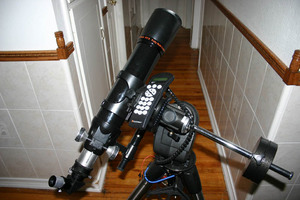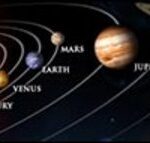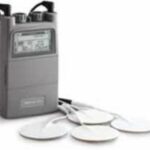The Celestron 80ED and CG-5 go to mount make a great package for the intermediate star gazer. Although at roughly $1200 for the complete setup it is a bit expensive for a new astronomer, when compared to the tens of thousands of dollars that the expensive setups cost it is a nice step up from a cheap department store special. The planets and the moon are crystal clear, and the setup is a piece of cake. Aligning the scope and using the built in “Go To” feature is a difficult process, so if looking at a star chart is a new experience for you, finding the desired target could prove to be frustrating. Overall this is a great scope for the money, and a perfect next step for a budding astronomer.
The scope and mount shipped together in a large box with plenty of padding to prevent damage during shipping. Without paying any attention to the directions, the scope and 6×30 finder scope were quickly mounted on the CG-5 mount. The mount is very heavy and sturdy with legs roughly 2 inches in diameter. The 80ED scope takes both 1.25″ and 2″ eyepieces, and it ships with 1 1.25″ 25mm eyepiece and 45 degree diagonal. The scope all assembled is light enough for one person to move around, however the spread of the legs is about 3 feet which makes maneuvering doorways a little bit challenging.
The first night out viewing was great. The sharpness on this scope is a 100 times better than an entry level scope. Saturn looked great with the rings easily visible, and Jupiter was clear with several moons observable. The quality of the German Equatorial Mount is very high. One issue is that the mount ships with no way to power the gears used for tracking and moving the scope. For the amount this scope cost it seemed like it should have come with some way to power it, however there was none. I took several D size batteries and some wires I had laying around and quickly had $2 makeshift power supply to power my mount. The mount moved with ease, and when the alignment was set to ‘Polar Align’ the gears could be heard slightly moving opposite the earth’s rotation. Since the earth is constantly spinning and the stars are essentially staying in the same position, the tracking function of a scope is needed to keep space objects focussed in the center of the eyepiece. If the scope does not compensate for the spinning of the Earth, the planets and stars viewed within the scopes eyepiece will appear to just drift by making detailed viewing difficult.
To properly align a telescope, the CG-5 GT mount will ask you to roughly point the scope north, enter your zip code, date and time, and then it will point to a star and ask you to move the scope until the star is in the center of the eyepiece. The finder scope has a cross hair so centering the target star is pretty simple. By manually moving the scope to center the star, the computerized mount will figure out how to compensate for the scope not being pointed exactly north. I found the process of stepping through the menu to be a piece of cake, however the scope never really aligned properly and the objects in the eyepiece slowly drifted by.
To mount a camera to the scope, I used the T-Ring adaptor for my Digital Rebel. The camera snapped into place as expected and after focusing I was snapping away at some of my favorite objects. Unfortunately I was never able to properly align the scope, but I was able to see some colors of the Orion Nebula although there were a lot of star trails. With the camera in place of the eyepiece and the scope not properly aligned, I was manually making corrections with the GT mount by centering the nebula in the cross hairs of the finder scope. Although it appeared as though I was correcting enough as the nebula was in the center of the finder scope throughout the exposure, the finder scope did not have a high enough magnification needed to properly keep everything perfectly centered.
To compensate for the improper alignment of the scope, I wanted to mount my camera on top of the 80ED, called a piggy back mount, and guide while looking through the main eyepiece of the scope. Unfortunately there are no
simple modifications or adaptors to make this happen easily, so I was not able to do any long time exposures of deep space objects.
Overall this is a great scope. Alignment is difficult, and long exposure photography is challenging. The images are perfectly crisp and clear when centered in the eyepiece. I would strongly recommend this scope to someone who wants something a little more than what is available at the local super store.






